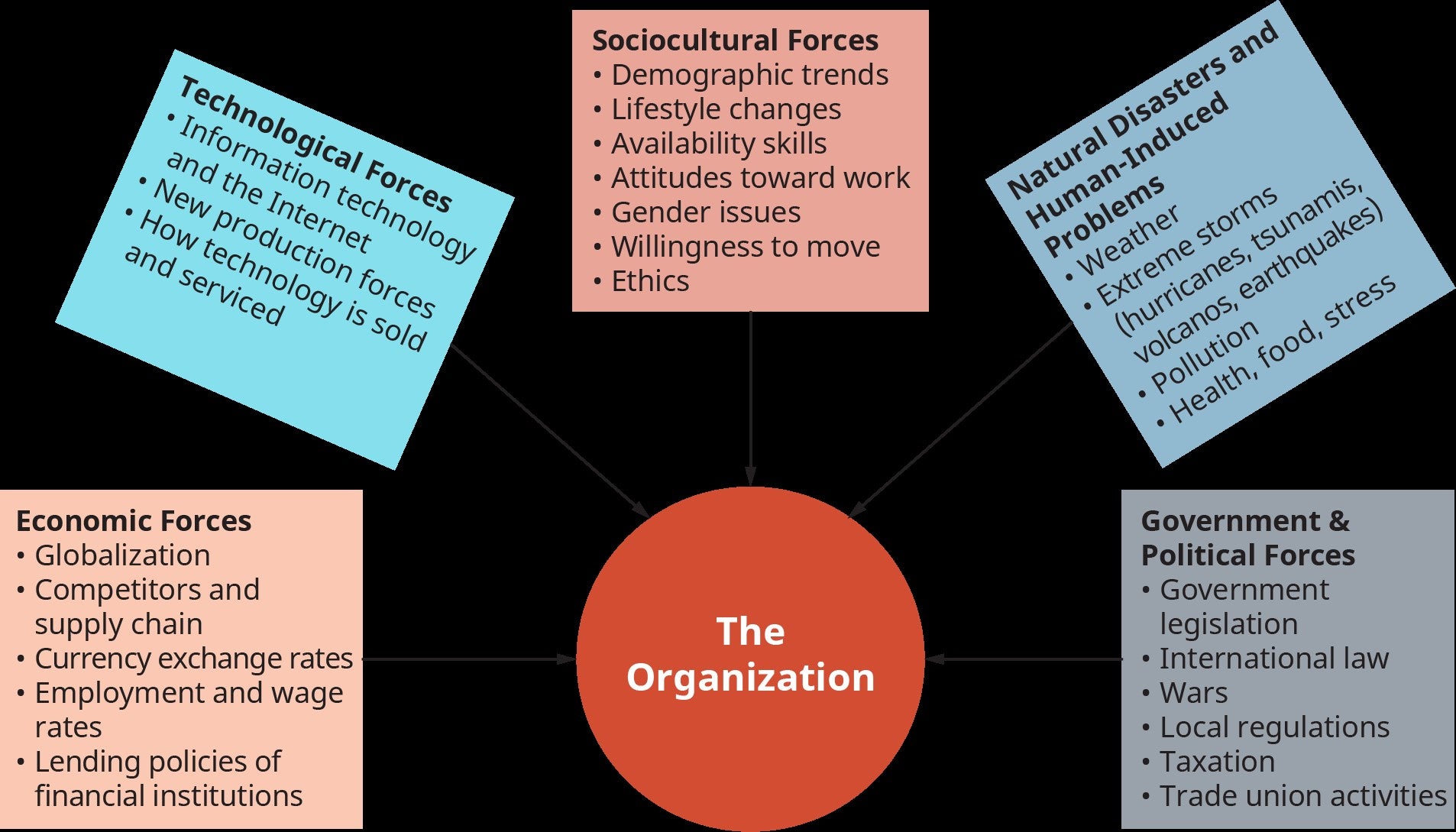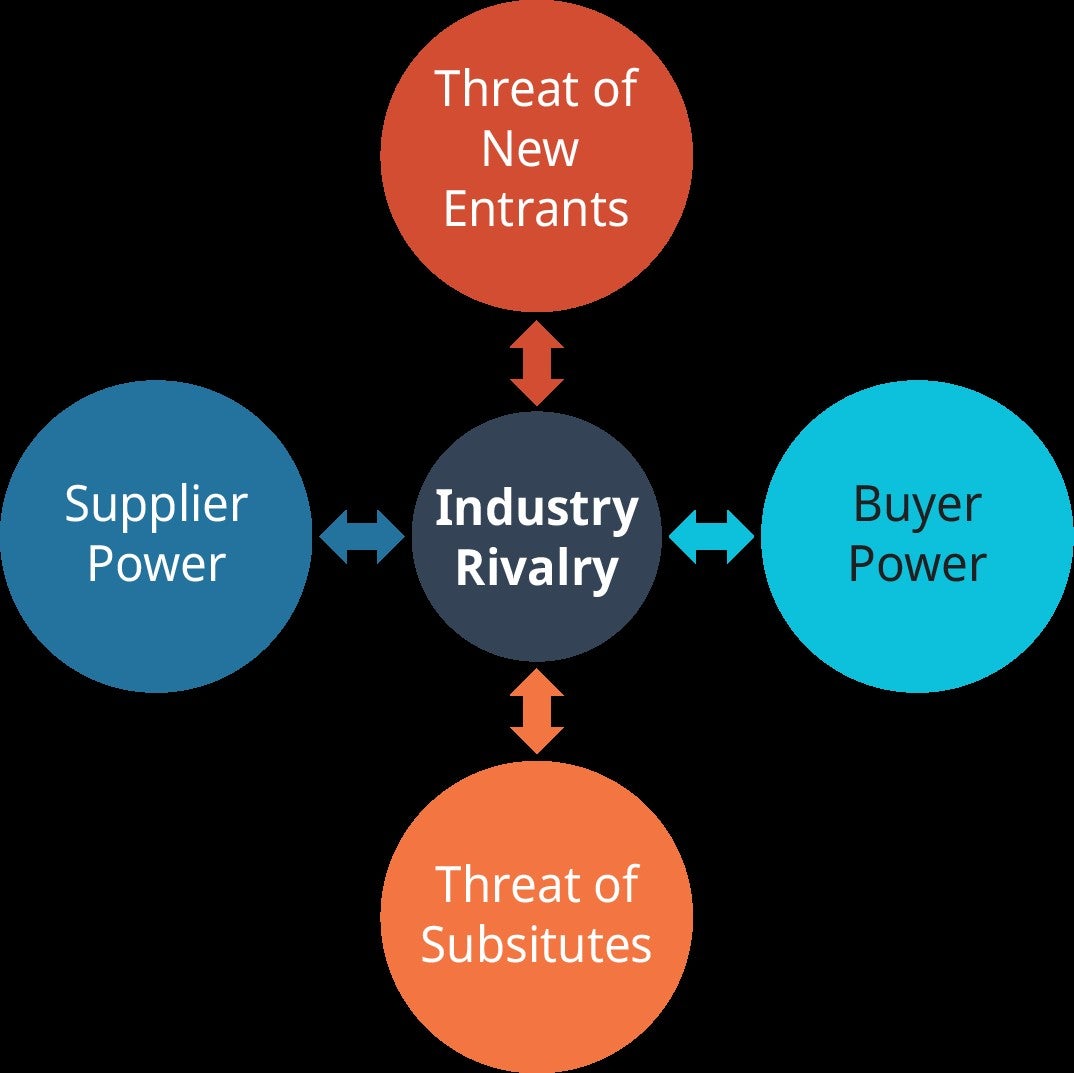Chapter 3. Project Initiation
3.2 Project Environment
When the business case and the project charter, and later, the project management plan and its subcomponents are prepared, the project environment surrounding the project should be examined thoroughly to delineate the factors that may have a negative or positive impact on the project activities and its outcomes. In PMBOK Guide 6th Edition, this environment is composed of enterprise environmental factors (EEFs) and organizational process assets (OPAs). PMBOK Guide 7th edition refers to them as the project environment. The project environment is composed of two components – internal and external, which are described in detail in the following sections.
3.2.1 Internal Environment
The internal environment in which a project is developed consists of the factors that are internal to the organization, but outside the project itself. These factors include elements such as organizational culture, structure, and governance as well as security and safety measures. Other tangible elements include geographic location as well as distribution of facilities and resources, infrastructure, IT software and hardware, resource availability, and employee capability. The internal environment also includes organizational process assets, which are processes, policies, and procedures as well as organizational knowledge bases (e.g., financial data, historical information, lessons learned, project files from previous projects)[1].
Consider the project charter example above. While we are creating the business case as well as preparing the project charter and project management plans, it would be wise to incorporate all the factors that may affect the mobile app and website optimization project. We should enumerate the main properties of our grocery store chain, some of which are provided below:
- Strategic objectives, mission, and vision
- Organizational values and beliefs
- Cultural norms that influence the relationships among coworkers
- Code of conduct
- The number of employees
- Geographic locations and the size of the stores
- Variety of the products and services sold
- Financial situation
We should also take into account the organizational structure of the headquarters and all the branches. This also helps us identify internal and external stakeholders who are affected by our project and who may affect our project. Additionally, this helps us identify the dependencies among the departmental units, and also identify internal resources that might need to be utilized to complete the project. Reporting structure inside the organization could influence our project’s decision-making and change request processes. When our project needs to utilize hardware and software tools to facilitate the activities, we can obtain them in an expedited way directly from the assets of our organization, which also saves the budget. When we need resources such as human resources, materials, and equipment, since we have already delineated the organizational structure with tasks and responsibilities of each unit, we can benefit from the agreements which have already been made with approved providers and subcontractors. Another advantage of listing all the capabilities of our organizations would be when we establish the project team. If our organization employs business or systems analysts, developers, user interface designers, or testers, we can ask their managers or executive-level managers above these managers to provide these qualified employees with specialized knowledge for our project. This may also reduce the external risks that we may face if we hire them from outside our organization. We will elaborate on the organizational structure in the “Organizational Structure” section below.
3.2.2 External Environment
A project’s external environment consists of the factors that exist outside of the organization. It includes market conditions, social and cultural influences and issues, legal restrictions, commercial databases, academic research, government or industry standards, financial considerations, and physical environmental elements[2].
Figure 3.2 illustrates types of general macro environments and forces that are interrelated and affect organizations: sociocultural, technological, economic, government and political, natural disasters, and human-induced problems that affect industries and organizations. Macro environment refers to the outermost layer of elements in a firm’s external environment that can impact a business but are generally beyond the firm’s direct control, such as the economy and political activity. This environment can also affect projects conducted by organizations. For example, economic environmental forces generally include such elements in the economy as exchange rates and wages, employment statistics, and related factors such as inflation, recessions, and other shocks—negative and positive. Additional factors include hiring and unemployment, employee benefits, factors affecting organizational operating costs, revenues, and profits, all of which are affected by global, national, regional, and local economies. Politics and governmental policies, international wars, natural disasters, technological inventions, and sociocultural forces could directly affect our organization and the projects or may interact with other forces such as economic forces.

Besides the macro environment as explained above and illustrated in Figure 3.2, the micro environment is another external environment element that refers to the middle layer of elements in a firm’s external environment, primarily concerned with a firm’s industry situation. Harvard strategy professor Michael Porter developed an analysis tool to evaluate a firm’s micro environment. Porter’s Five Forces is a tool used to examine different micro-environmental groups in order to understand the impact each group has on a firm in an industry (Figure 3.3). In this textbook, we will not explain each factor (See the reference link[3]). However, these five factors, industry rivalry, the threat of new entrants, threat of substitutes, supplier power, and buyer power, could have a substantial influence on a project. Therefore, we should take these external factors into account while assessing the factors that may affect our project from outside the organization.

It is important to keep these external factors in mind when preparing for and managing a project since many if not most of these external factors and any changes in these factors may have negative or positive impacts on projects. They could lead to risks that may put the project activities and deliverables, and the overall project in jeopardy.
- Project Management Institute. (2017). A guide to the Project Management Body of Knowledge (PMBOK guide) (6th ed.). Project Management Institute. ↵
- Project Management Institute. (2021). A guide to the Project Management Body of Knowledge (PMBOK guide) (7th ed.). Project Management Institute. ↵
- Principles of Management. (2019). Retrieved from https://openstax.org/books/principles-management/pages/8-4-a-firms-micro-environment-porters-five-forces?query=micro%20environment&target=%7B%22type%22%3A%22search%22%2C%22index%22%3A0%7D#fs-idm537041840 ↵

